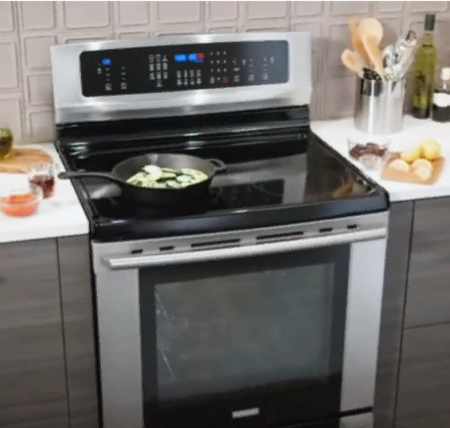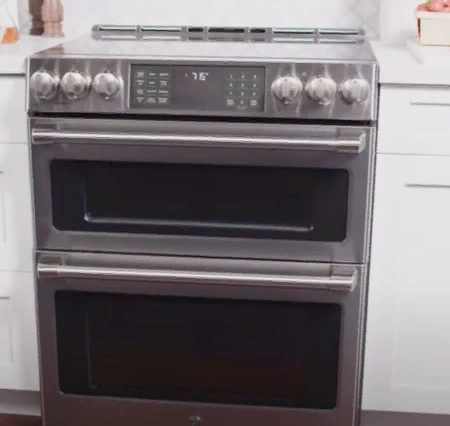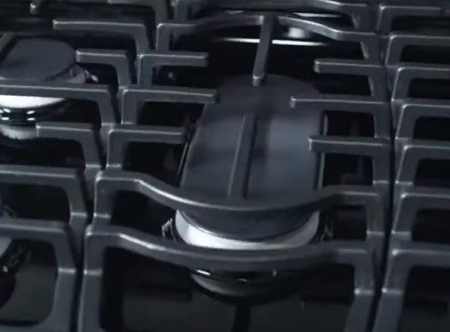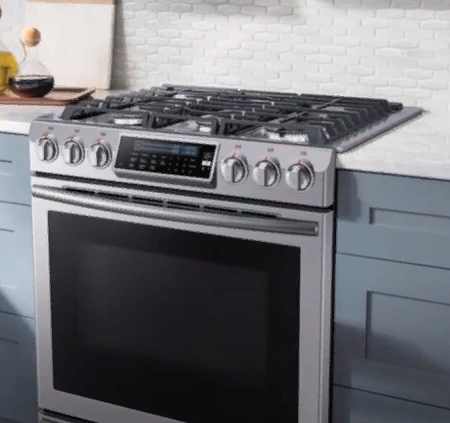All ovens, dependent and independent, built-in and freestanding, are divided into electric and gas ovens. And it is the difference in energy source that is paramount, which is where you should start your choice.
Electric models account for a large percentage of the ovens manufactured today, and the trend has been growing even more recently. Supply, as you know, is primarily determined by demand: there are actually fewer and fewer people willing to buy a gas oven. Does this mean that gas ovens are worse, or the growing popularity of electric ovens is just a fashion trend? Let’s try to figure out which oven is better – gas or electric, what today’s market offers us, and what is the guideline for making this choice.
Oven types
Housewives regularly use the oven, but most of them do not even think about the principles of its work. Modern ovens have overgrown a mass of functions compared to the models of half a century ago, but in general, their device has become only slightly more complicated.
Any oven is, first of all, a metal cabinet with ventilation holes, inside which is placed the working chamber. The space between the chamber and the walls of the cabinet is filled with heat insulator, which helps reduce heat loss, and therefore the energy consumption for heating.
The action of any oven is based on non-contact heat transfer from the heating element to the processed product, resulting in the latter being heated to a temperature of 30 to 250-280 ° C. The heat source may be a heating element (in the case of electric ovens) or an open flame (in the case of gas ovens). All ovens differ in the number and type of location of heaters – they can be placed only at the bottom or bottom and top of the working chamber, and sometimes even on the back wall, next to the convection fan.
Gas oven works on a combustible gas – mains or bottled. By regulating the flow of gas that enters the burner, you can change the size of the flame. Passing through the nozzle of the burner, the gas mixes with air. The resulting mixture is ignited after exiting through the side holes of the burner. Ignition of the flame in modern gas ovens is made by means of built-in electric piezo igniter. For the gas oven to function properly, a constant supply of air is necessary.
Technical requirements
The most important criterion for choosing is not your desires, but your capabilities. If the house is not connected to the centralized gas network, then all the talk about the advantages or disadvantages of gas ovens for you does not matter, because you, in fact, have no choice. (We will not consider the possibility of working from a cylinder of liquefied gas, because this option is acceptable only in the complete absence of other options).
There are, however, technical restrictions on installing electric ovens. We are talking about a possible mismatch between the power consumption of the device and the capabilities of the power grid. Three or four decades ago, the number of household appliances was not the same as today, and their total power consumption is not comparable to today.
Therefore, electrical networks in homes built in the last century are designed for very different loads. Installing a powerful electrical appliance, such as a modern electric oven, in an older home may require replacing the wiring (however, replacing the wiring in an individual apartment does not always solve the problem due to the insufficient power of the external network).
When deciding whether a gas or electric oven is better, make sure you have the technical capabilities to install both.
Heating modes of gas and electric ovens
Different foods require different temperatures and heating rates to reach a given degree of doneness. The more heating modes your oven has, the more diverse the list of foods you can cook.
Inexpensive electric ovens are equipped with upper and lower heating elements (heating elements), which can be turned on separately or simultaneously. Sometimes under the “ceiling” of the working chamber is another additional heat element, which at maximum heat red-hot – the grill.
More expensive models in addition to the classic heating modes have convection heating. Convection – forced air circulation with a built-in fan to redistribute the heated air over the entire area of the oven’s working chamber – helps to achieve uniform baking of food on all sides and forget about the burnt on top and soggy buns inside.
Heating of the working chamber in budget gas ovens is unidirectional. The heat is created only by the gas burner located below. However, despite this, the gas oven is usually superior to the electric oven in terms of heating speed.
Models in the middle price segment in addition to this have a grill, which can be either gas or electric (ovens with an electric grill are essentially no longer gas, but gas-electric).
The gas grill is more difficult to use, but allows you to significantly improve the taste of the dish. Many manufacturers have begun to equip their gas ovens with convection fans, which provide forced air circulation in the working chamber, which is necessary for fast and even heating of the prepared product. There is no heating element around such a fan, as in electric ovens, it simply mixes the air heated by the lower burner.
Electric ovens have more heating modes than gas ovens, although as technology advances, their capabilities are increasingly comparable.
Variety of cooking functions
When comparing the functionality of modern electric and gas ovens, the first noticeably wins. In addition to several basic heating modes you can often find additional thermal modes (“Gentle defrosting”, “Rapid heating”, “Keeping cooked food warm”, “Stewing”, “Fermentation”, etc.), as well as the possibility of steam cooking or combining with a microwave.
The smart timer can be programmed to turn on or off at the desired time. The core probe not only measures the temperature inside the food to be baked but also signals when it is ready. Built-in auto-programs of various dishes can even make an inexperienced hostess a real chef. No wonder that many cooks even in a gas-powered kitchen prefer to have an electric oven, which provides more opportunities for creativity.
The functionality of gas ovens is still much poorer than the capabilities of their electric counterparts.
Ease of use
Mechanical control of the gas oven does not cause much difficulty even for those users who with any technique exclusively on the “you”; it is almost impossible to disable it.
Electric oven control can be implemented in two ways – electromechanical or electronic. The electromechanical control unit is simpler and more reliable, while the electronic one provides the user with much more features, making the oven not just a kitchen appliance, but a smart home appliance. It’s impossible to say which of these three options is better or worse – it all depends on your personal preferences.
The main disadvantage of Soviet-era gas ovens was the difficulty of lighting them. After using up a box of matches and still not managed to ignite the flame, the owner of this miracle sighed heavily, enviously remembering the electric stove, which he saw at a neighbor. Today we are spared such problems. Almost all modern gas ovens are equipped with electric ignition with manual or automatic switching. When you turn the gas regulator inside the burner, an electric spark will pop and ignite the gas. This is done either by you pressing the ignition button or automatically. Electric ignition allows you to forget about matches, which greatly simplifies the use of the oven.
The answer to the question of whether a gas or electric oven is better, in terms of usability, depends on what you mean by usability – affordable simplicity or the maximum use of modern technology.
Where is the best baking quality – in gas or electric ovens
It is traditionally believed that the open flame is nobler than electric heaters, that dishes cooked on fire have a special flavor and aroma. Recently, however, the preferences of housewives are clearly on the side of electric ovens. In them the heating elements, distributed over the entire area of the device, ensure even heating of the product on all sides.
In gas ovens to achieve uniform baking is much more difficult. Professionals manage to get good results and in gas ovens, but apparently this is a consequence of their years of experience and skill – each gas oven has its own character, usually extremely harmful.
Objective answer to the question of which oven the dishes are tastier, no one will give, because the taste – a purely individual concept. But it is much easier to achieve uniform baking of products and reproducibility of results in electric ovens.
The presence of oven cleaning functions
As hostesses who actively use their ovens say: “If you like to eat well, you also like to clean the oven”. Maybe the proverb is not quoted quite correctly, but the essence does not change: the walls of the oven should be periodically cleaned of accumulated dirt. It is better to do this after each use, because, firstly, infrequent cleaning of the cooking space is simply unhygienic, and, secondly, fresh dirt is much easier to remove.
Owners of cheap ovens, both electric and gas, will have to clean the walls manually. More and more often there are models with the EcoClear cleaning system: the special “bioceramic” coating on the walls of such ovens practically does not stick to fat, which means that the cleaning procedure becomes less time-consuming.
In the more expensive units, manufacturers have provided automatic cleaning. Two methods of self-cleaning the walls of the oven are used – catalytic and pyrolytic. Technology of catalytic decomposition of grease and other impurities directly during cooking on the catalyst applied to the enamel, which covers the walls, can be implemented in both electric and gas ovens.
But pyrolysis, i.e. burning off food residues at 500 ° C, is possible only in electric models, because with a gas burner to heat the walls to the required temperature is almost impossible. Pyrolytic method of cleaning is considered the most effective, but the ovens in which it is used are the most expensive.
Owners of most gas ovens will have to clean the oven by hand, using a sponge and detergent. Electric ovens have more options to make life easier for their owners.
The economics of use
The main disadvantage of electric ovens are considered high operating costs. Indeed, in this respect, they lose to gas “brethren”: electricity costs consumers more than the mains gas. However, many residents of gas-fired homes and apartments prefer to install electric ovens in their kitchens. What is the reason for such carelessness? Let’s try to assess how expensive it is to use an electric oven.
An oven is not a cooktop and is not used every day. Most housewives bake or roast in it at best once or twice a week, and even less frequently. The power of the oven is 2-3 kW, the average cooking time is less than 2 hours.
Multiplying all these figures, we realize that at today’s electricity rates, your costs are unlikely to exceed a hundred rubles per month. If the gas is paid by the meter, the amount of savings will be even more elusive. Whether these savings are worth the sacrifice of convenience is up to you to decide.
Using a gas oven is cheaper than using an electric oven. You can estimate the savings based on how often you expect to use the appliance and the cost of electricity and gas in your area.
But pyrolysis, i.e. burning off food residues at 500°C, is possible only in electric models, because with a gas burner to heat the walls to the required temperature is almost impossible. Pyrolytic method of cleaning is considered the most effective, but the ovens in which it is used are the most expensive.
Owners of most gas ovens will have to clean the oven by hand, using a sponge and detergent. Electric ovens have more options to make life easier for their owners.
Safe to use
No freshly baked pies or grilled chicken will be a joy if you are constantly haunted by the thought of the potential danger of the unit with which you cooked them. Which oven is better – electric or gas – in terms of safety?
Many people strongly associate the word “gas” with the word “danger”. Indeed, a gas leak can have fatal consequences, such as poisoning of occupants or an explosion. To minimize the risk, all modern imported gas-fired ovens are equipped with a “gas-control” function: in case of accidental flame failure (caused by strong air flow or spilled liquid), the gas supply will be automatically cut off.
In some models, when the flame goes out, the gas supply is not cut off, but the auto-ignition is triggered. The result of both variations is the same – the probability of gas leaking into the room is reduced to zero. Safety depends not only on the design of the oven, but also on the correctness of its connection to the gas mains: this work should only be performed by a specialist.
Let us also remind you that when the gas oven is working, combustion products are released, including carbon monoxide. To avoid its accumulation in the room in dangerous to human health concentrations, you should take care about good air circulation and at the same time with the oven to buy a hood.
On the other hand, electric ovens also carry certain dangers, such as the possibility of fire due to overheating and the risk of electrocution. To prevent the risk of burning furniture and other items in close proximity to the oven, temperature sensors are installed on the outside walls of the oven. If the walls are heated above a preset limit (usually 90°C), they cut off the appliance’s power supply. In addition, tangential cooling – blowing cold air on the outside walls of the oven – is used.
A safety switch-off will help to protect people from electric shock: if a malfunction occurs, the electronics will de-energize the appliance. It should be remembered that the safety of using the electric oven depends not only on the manufacturer of the equipment, but also on the correctness of its connection to the mains. If you do not know what is the power consumption, wire cross-section, grounding, etc., then do not do it yourself, and ask for help from a professional electrician.
Explosion and fire hazards of gas ovens are higher than those of electric ovens. However, understand that safety depends primarily on following the rules of installation and operation, i.e., on you.
Electric vs. gas oven price comparison
Prices for any household appliances depend on the technical characteristics, functionality, energy efficiency, ease of use, attractiveness of appearance, as well as the novelty and popularity of a particular model and, of course, the prestige of the brand.
It would seem that gas ovens should be significantly cheaper than electric ovens, because they win only on the value of secondary operating costs, in this case the cost of the energy source. In practice, however, we observe the opposite: the average gas oven costs about one and a half times more than a functionally similar electric oven. Apparently, in this case, the factor of less representation in the market has an impact: there are fewer gas ovens than the electric ones.
With the same or even superior capabilities, electric ovens are cheaper than gas ovens.











What’s the difference between cooking with gas vs. electric? I think the greatest difference is in timing. The common electric burner takes a little bit longer to warm up, but most importantly, takes a long time to cool down. The hidden heat indicates that you either need to remove your pans– not just a portion of the food– when the food is done to your fulfillment (taking into consideration the latent heat of the pan, too) or to turn the heat off earlier.
An electrical coil can remain very hot up to 15 minutes after you’ve turned it off. You can utilize that to your benefit, saving some electricity, if you’re mindful of it. But if you’re not, you’ll wind up with burnt food and/or scorched pans or oven.
Insidiously, even when a coil stops glowing, it can stay very hot. You can burn yourself or other items by putting them on a coil that is switched off however still hot.
I vastly prefer gas (or perhaps butane) stoves, however where I’m currently living is not piped for gas. I need to utilize electrical. For many years, I’ve grown used to it, however still dream I had gas offered.
Compared to ‘standard electrical’ hobs, gas is more affordable and more responsive.
I’m from the UK, where we have a ‘nationwide gas facilities’ such that the majority of houses have a mains gas feed. As an outcome of this, coupled with our natural reserves, gas has become the cheap way to prepare over here. I understand that, in other parts of the world, this is certainly not the case.
The response time of gas cooking is, obviously, much quicker, given that there’s no thermal mass of an electrical ring to heat up – the burning gas is burning within a second, and the only thermal mass is the container and the food.
Nevertheless … induction hobs have implied that, apart from the capital investment, electrical energy is rebounding over here. The speed of action of an induction hob is as good as gas – in fact, it can get, say, a big pan up to the temperature level at which I want to add olive oil quicker than gas.
To be sincere, if I had the option of standard electric or gas ovens, I ‘d select gas each time … but would pick induction instead of either. While I have a four-burner gas hob in my home … I have it turned off under the counter, a piece of board over it, and a set of desktop induction hobs sitting there instead.
Gas ovens supply a degree of responsiveness and temperature level control that enable even marginally competent cooks to become fantastic ones.
Electric ovens nearly ensure that bad cooks will remain bad cooks.
Simply as topmost collar buttons were probably produced by style conscious women, electrical ranges needed to have actually been created by men because neither of them could ever have derived from the imagination of anyone who has actually needed to sustain in fact utilizing one for more than fifteen seconds.
Considering that I reside in leased spaces, I usually need to take what I can get for home cooking, and that usually indicates electric. I do like the electrical glass tops (what I have now) due to the fact that you can regulate heat rapidly by just moving a pan to the side, however it’s still not almost as responsive as gas. Cooking with electric you do have to think ahead of time. It’s quite fun to watch Julia Child cooking with about a million electrical hobs, all set to different heats up, in her first shows (she was sponsored by an electrical range maker and the first episodes were filmed basically in their test kitchen).
Speaking as somebody with a huge choice for flame for cooking, and living in the U.S.
– Much much better temperature control with flame. Instant on and instant off. Electric takes some time to warm up, and time to cool off.
– I cook a lot with woks (round bottom pan) and electric is beside worthless in this case.
– If you are the sort that likes to saute by utilizing the pan itself to toss the food, electrics are bothersome here, you lose heating altogether.
– Not having open flames is just plain much safer.
– No danger of filling your home with gas if you have electric.
– When it pertains to ovens, flame is better for broiling. That being stated, what’s far more important is the ability of your oven to maintain a consistent temperature level, not the source of the heat. That being said, I have never ever had a gas oven for baking/roasting. I address the insufficiencies of temperature level control by keeping a large baking stone in the bottom of my oven